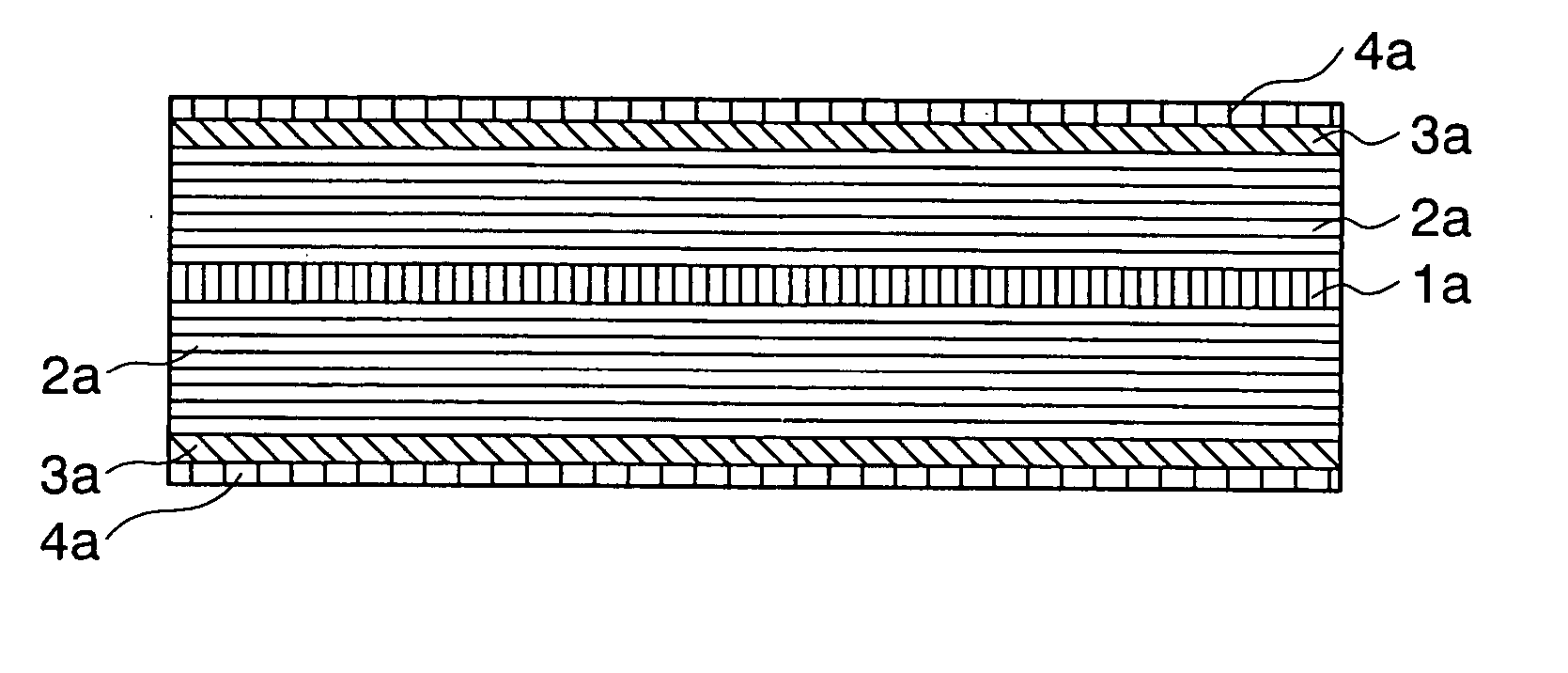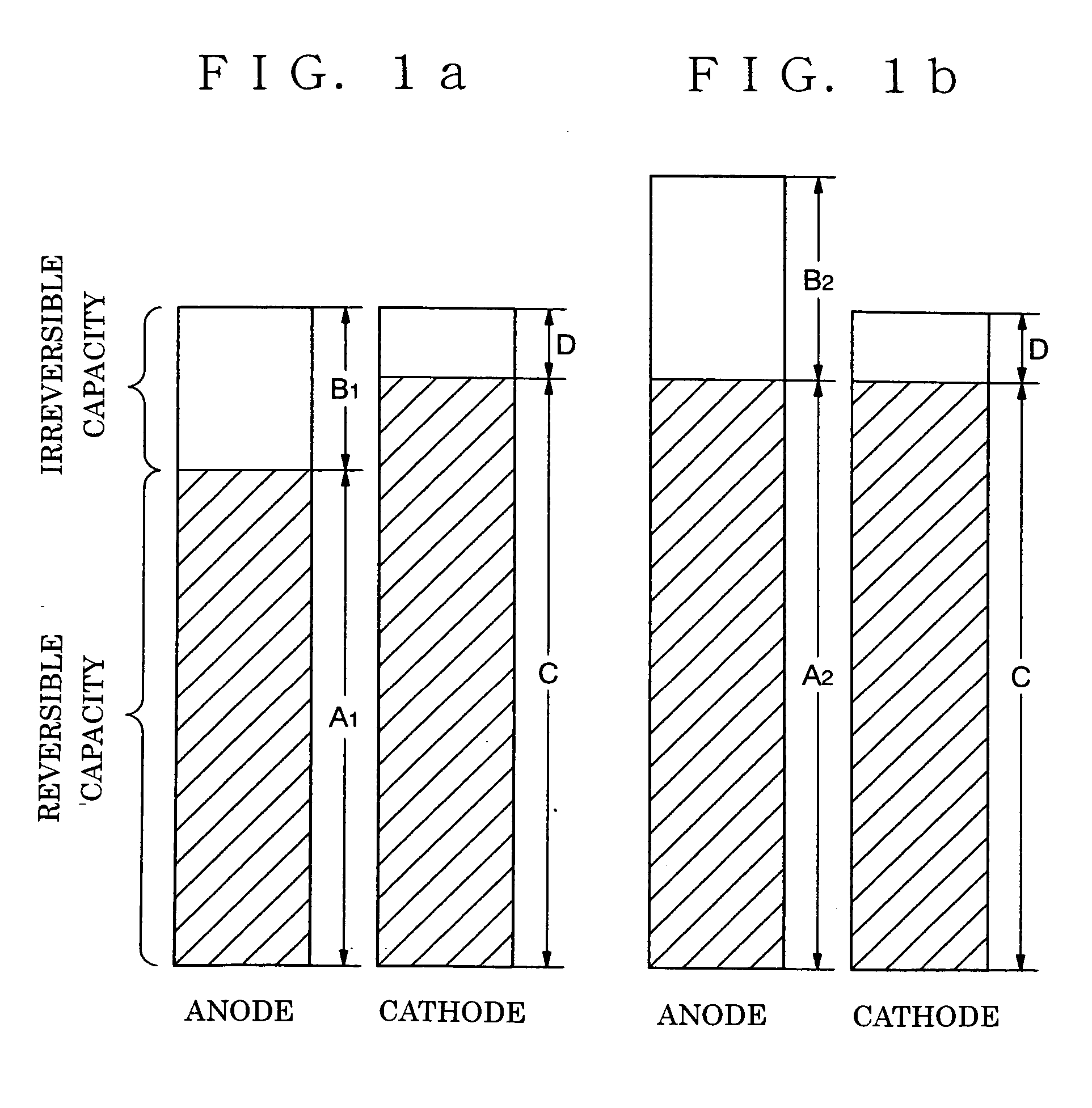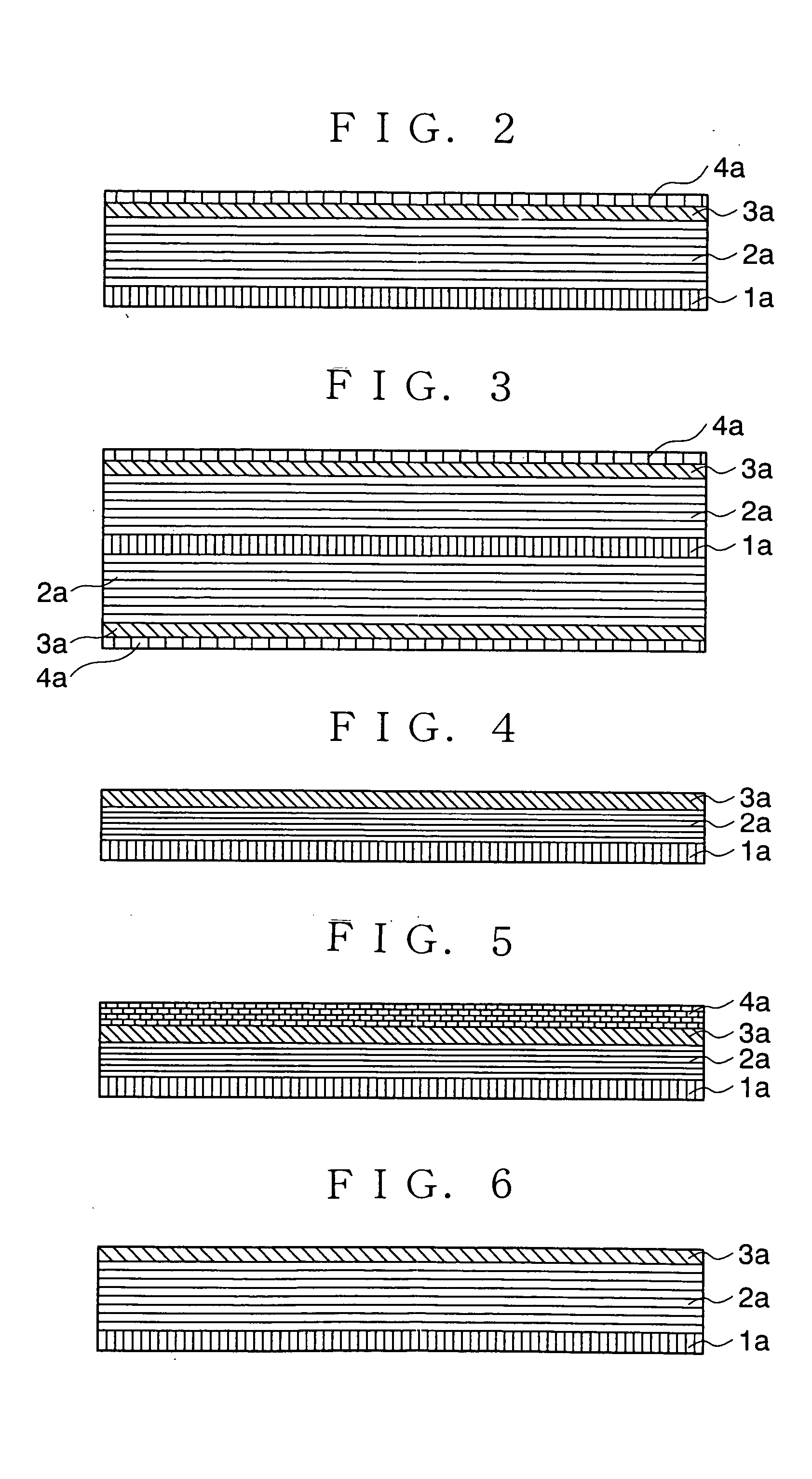Negative pole for a secondary cell, secondary cell using the negative pole, and negative pole manufacturing method
- Summary
- Abstract
- Description
- Claims
- Application Information
AI Technical Summary
Benefits of technology
Problems solved by technology
Method used
Image
Examples
first embodiment
[0095] FIG. 2 is a sectional view of an anode of a non-aqueous electrolyte secondary battery in accordance with the present invention.
[0096] A current collector 1a is an electrode for taking out current outside of a battery and externally supplying current into the battery during the charging and discharging. The current collector 1a is made of a conductive metal foil such as aluminum, copper, stainless steel, gold, tungsten and molybdenum.
[0097] A first anode layer 2a (first layer) is an anode element inserting or extracting lithium during the charge and the discharge. The first anode layer 2a is carbon capable of inserting Li such as graphite, fullerene, carbon nano-tube, DLC (diamond like carbon), amorphous carbon, hard carbon and a mixture thereof.
[0098] The second anode layer 3a (second layer) is made of the film-like material through which the lithium or the lithium component passes. Such a material includes B.sub.2O.sub.3, P.sub.2O.sub.5, W.sub.hO.sub.3h-1 (h=1,2,3,4), Mo.sub...
second embodiment
[0100] the present invention similar to the first embodiment as shown in FIG. 2 may have a structure including the carbon anodes 2a, the second anodes 3a and the third anodes 4a on the both surfaces of the current collector 1a as shown in FIG. 3.
third embodiment
[0101] FIG. 4 is a sectional view of an anode of a non-aqueous electrolyte secondary battery in accordance with the present invention. In the anode, the first anode layer 2a is formed on the current collector, and the second anode layer 3a is formed thereon. The first anode layer 2a and the second anode layer 3a contain an excess lithium component with respect to its theoretical composition in a fully charged condition. The theoretical composition of the lithium is as described above.
[0102] Although the second anode layer 3a is exemplified to be placed on the first anode layer 2a in FIG. 4, a structure, in accordance with a forth embodiment as shown in FIG. 5, having the third anode layer 4a made of lithium on the surface of the anode which is shown in FIG. 4 in accordance with the third embodiment can be employed.
[0103] The cathode usable in the present invention has a structure including a substrate such as an Al foil on which a cathode material is applied. The material includes a...
PUM
| Property | Measurement | Unit |
|---|---|---|
| Fraction | aaaaa | aaaaa |
| Fraction | aaaaa | aaaaa |
| Fraction | aaaaa | aaaaa |
Abstract
Description
Claims
Application Information
 Login to View More
Login to View More - R&D
- Intellectual Property
- Life Sciences
- Materials
- Tech Scout
- Unparalleled Data Quality
- Higher Quality Content
- 60% Fewer Hallucinations
Browse by: Latest US Patents, China's latest patents, Technical Efficacy Thesaurus, Application Domain, Technology Topic, Popular Technical Reports.
© 2025 PatSnap. All rights reserved.Legal|Privacy policy|Modern Slavery Act Transparency Statement|Sitemap|About US| Contact US: help@patsnap.com



